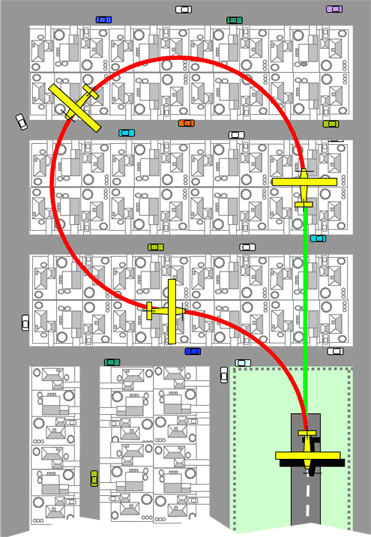Indeed, combustion chambers will never be colder, lubricants more viscous, ignition systems will never be less proven, and the plane, fully loaded with fuel, will never hang heavier from its wings than at the instant those wheels first break free of the pavement.Engine failure on take-off may well be every Pilot's Nightmare, especially when he or she has only one engine to start with. If the symptoms are detected soon enough, of course, the take-off may be safely aborted and the plane brought to a shuddering stop before the airport boundary (see story). Beyond that point and for the first minute after lift-off, the safety of flight is most precarious. An engine swallowing a valve or shattering a rotor means the pilot has no choice but to proceed straight ahead no matter what obstructions are in the flight path. There is a wry expression for the least worst outcome -- "controlled crash." The word "controlled" assumes that during the final seconds of flight, the pilot did not wrench the plane into a panicky stall. That would result in the worst worst outcome.Ironically, in a multi-engine airplane, the situation can actually be worse during that crucial first minute of flight. Asymmetrical thrust -- a good engine on one wing working against the drag of a dead engine on the opposite wing -- can flip the plane onto its back. Twin-engine flight training is dominated by the pilot learning critical reflexes -- "step on the good engine!" (with the correct rudder-pedal) and "never to turn into a bad engine!" The first priority after take-off is to establish "minimum controllable airspeed." But at that speed, a crippled aircraft, flying crookedly in the sky, may not be able to maintain altitude, let alone climb. Thus, for the aircraft with more than one power plant, a failure of one of them may result in a controlled crash at a speed typically twice that of a single-engine plane.After that first minute of climb-out, though, the picture gets steadily brighter. With each thousand feet in altitude above ground level, gliding distance increases by about a mile, which opens up options for emergency landing sites -- mathematically speaking, "according as the square of time aloft." After climbing one-mile straight up, for example, the pilot has a hundred square miles to choose from and several minutes to make the choice.
Controlled Crash: The Etymology Once again, my good friend Richard
Alexander has enriched
me and now my readers with his insights...
There can be little doubt that "controlled crash" originated in the form of exquisite hyperbole, most likely to characterize carrier landings. As appropriated here, the expression has been literally demolished. Sorry. |
 hatever
the time available for a "dead-stick landing,"
however, it probably won't
be long enough for even the most sophisticated
pilot to solve the following
puzzle:
hatever
the time available for a "dead-stick landing,"
however, it probably won't
be long enough for even the most sophisticated
pilot to solve the following
puzzle:

